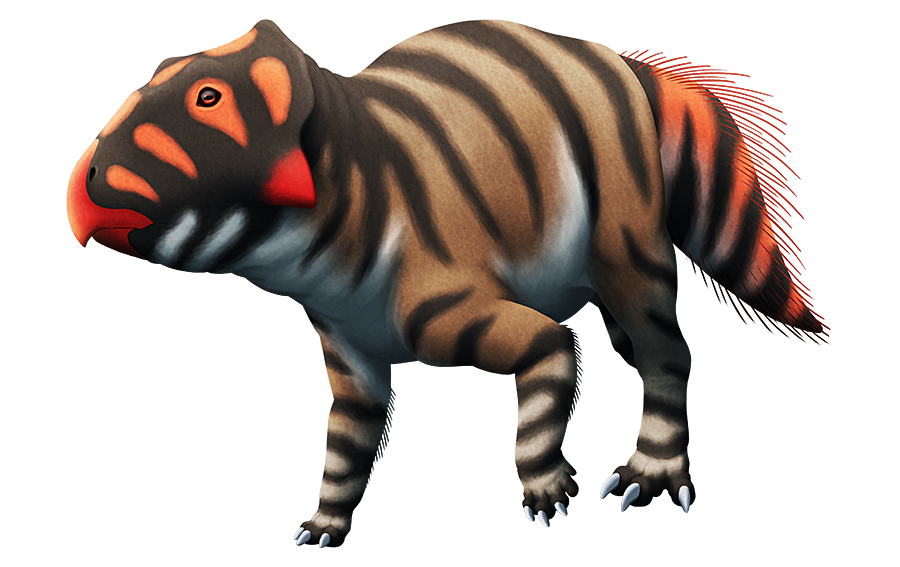Although much less famous than their larger horned and frilled relatives, the leptoceratopsids were a widespread and successful group of ceratopsian dinosaurs during the Late Cretaceous, with fossils known from North America, Asia, and Europe (and, dubiously, Australia).
They were fairly small stocky quadrupedal dinosaurs, sort of pig-like, with short deep jaws and powerful beaks adapted for eating fibrous low-level plants like ferns and cycads – and to process such tough food they even evolved a chewing style similar to mammals like rodents.
Prenoceratops pieganensis here is known from the Two Medicine Formation bone beds in Montana, USA, dating to about 74 million years ago. Around 1.5-2m long (~5′-6’6″), it was very similar to its later relative Leptoceratops, but had a slightly lower, more sloping shape to its skull.

